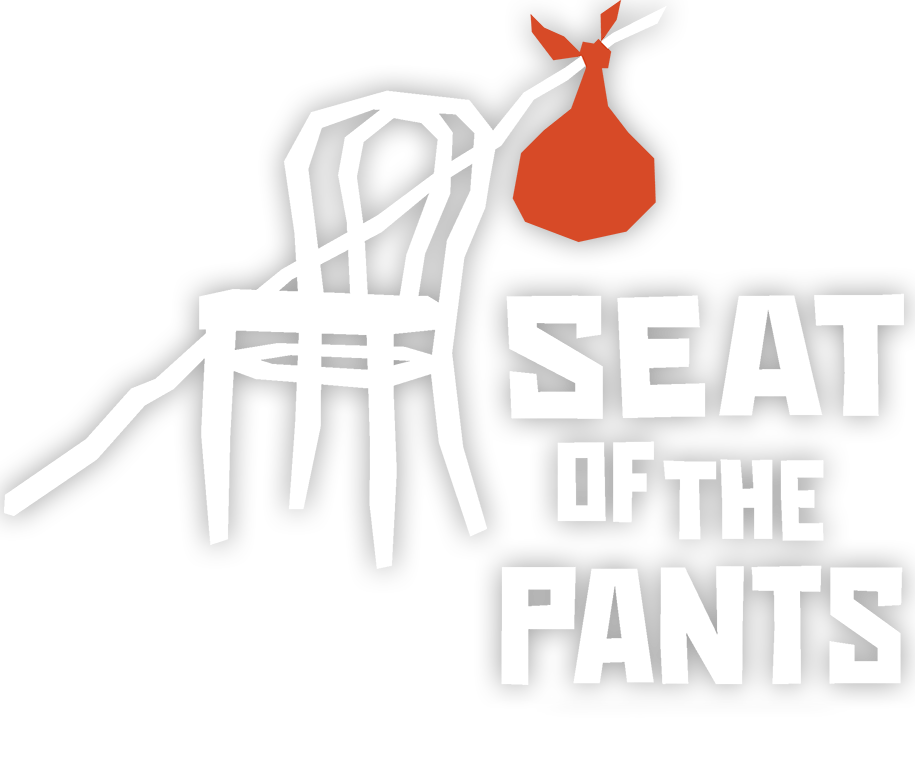ROUND ONE: FIGHT [SLOWLY]!
Choreographing fights for the stage is a bizarre and fun challenge. When approaching any kind of choreography (dancing, stage movement, intimacy, etc.) I try to continuously ask myself - and the director whose work I’m trying to support - what’s the story. Knowing the given circumstance of the scene is often enough, but other factors may contribute significantly to the final product. Last night’s rehearsal was a nice example of that.
Before committing to any choreographed movement, it’s always a good idea to ask if there are any physical limitations for the actors who will have to execute the movement repeatedly and safely. Knowing that a knee or an ankle endures chronic pain is super helpful so that the scenework doesn’t become compromising.
With the director, in this case Craig, we talked about the scene leading up to the fight, where characters are in space, what furniture is around, how the transitions between rooms function (steps, doorways, etc.), what the final picture should try to accomplish, and how this physical work can meet the asks of the script/narrative. Within those questions we talked about which characters are empowered, who is isolated, who is vulnerable, and how we can organically complicate the moment to fuel the conflict indicated in the script without changing the story.
When bringing the choreography to the actors, I had roughly four different editions of the fight plotted to give them a range of options of what might feel more organic for them. Honestly, it was overkill, but in the rehearsal room, I’d rather have too many options at the ready than be found lacking and waste time. Getting to work with the group of actors who engage in the brief fight sequence was awesome. From the get-go they were immediately intuned with what felt natural to their body and character. We had explored two different options when we discovered a lovely hybrid of choices and moves that would work best to get us where we wanted to go. Having had some really nice time to marinate on these characters and the tensions of this play, the input from the other actors was so informed and immediately accessible and actionable in the building of the choreography.
It can be tempting and satisfying to learn steps and then bust them out in hastened speed, but in an odd kind of way, stage combat scenework thrives in a slightly under-paced tempo. If someone should find themselves fighting in hand-to-hand combat in real life, speed would very much be a helpful tool. In storytelling, quick overlapping/simultaneous movements become hard to understand and track. This is what makes fight choreography a bizarre sort of challenge. The actor has to be locked in and hyper focused on the degree of their speed often in spite of the emotional stakes fueling the scene. Visually, fights are usually most successful when they are executed at 3/4 the natural speed of real life. It is a tempo that allows audiences and scene partners to clock the beginning, middle, and end of each action in a sequence and thereby allowing the storytelling to be clear through the movement. Any faster and it’s like the fighting sequences in Dragonball Z - twitchy flashes of movement that drone across your vision without much narrative impact.
Starting out, it’s important to learn and execute the steps in as sustained and controlled a manner as possible. As the steps become more fluid and naturalistic, an actor and director can embellish the aesthetic of how the fight gets executed. In rehearsal, the actors intuitively offered that this bout between themselves would have a quality of clumsiness about it. As of day one, that’s a helpful given circumstance to know as the scene evolves in rehearsals, but for round one, we’re going to keep that notion waiting in the wings. As we rehearse, we will look at the ways to introduce that physical quality without compromising the safety of the actors. Introducing emotionally-charged qualities or physically-altering qualities too quickly opens up a lot of opportunities for injury.
Going forward, when rehearsing this fight sequence, we’ll get in the habit of rehearsing it at an “underwater” or “tai chi” paced tempo, then at 50% tempo, and then at show-pace - that golden 75%. Over time we may dispense with one of the slower tempo runs, but for now, it’s a practice that will empower the more sustained sense of pace.
I love getting to work with actors like this and it’s fun to get to stretch my actor/director brain to meet these kinds of challenges. It’s an extra fun experience when working with the creative and inspired actors of this cast and creative team. Huzzah process!
- Michael



